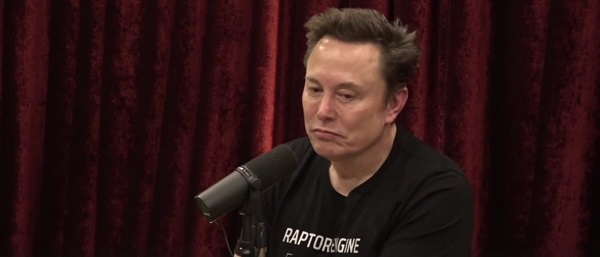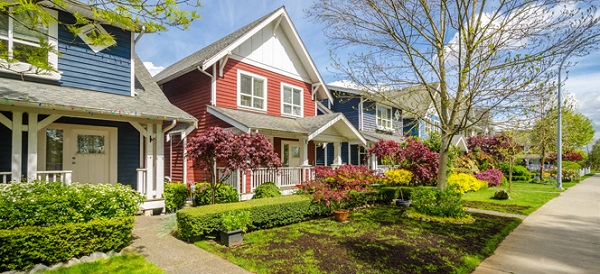Alberta
Trudeau’s Tariff Retaliation Plan: Alberta Says “No Thanks”

After years of neglect and exploitation, Alberta refuses to back Trudeau’s countermeasure plan against Trump’s tariffs, exposing the cracks in Canada’s so-called unity.
Let’s take a moment to appreciate Justin Trudeau’s brilliant strategy for handling Trump’s latest stunt: tariffs. Trump, in true Trump fashion, threatens to slap a 25% tariff on Canadian goods, because apparently, Canada is responsible for all of America’s problems—from border security to fentanyl. And Trudeau’s response? A $150 billion countermeasure plan that includes the possibility of crippling Alberta’s energy sector. Genius! Except one small problem: Alberta said, ‘No thanks.’
Why wasn’t Alberta there? Because Premier Danielle Smith isn’t an idiot. Trudeau’s plan includes export levies on Canadian oil, a move that would essentially tell Alberta to torch its own economy to help Trudeau look tough on Trump. Alberta exports $13.3 billion of energy to the U.S. every month, making it the lifeblood of this country’s economy. But sure, let’s just gamble that away because Trudeau needs a distraction from his sinking legacy.
But Alberta’s refusal isn’t just about this plan. It’s about years—years—of Ottawa treating Alberta like the black sheep of Confederation. Remember the Northern Gateway Pipeline? Trudeau killed it. Energy East? Dead, too. Those projects could’ve given Alberta access to global markets. Instead, Trudeau left the province landlocked, dependent on the U.S., and completely vulnerable to economic extortion like this. And now, after all that sabotage, he expects Alberta to ‘unite’ behind his plan? Please.
And don’t even get me started on Bill C-69. They call it the ‘Impact Assessment Act,’ but Albertans know it as the ‘No More Pipelines Bill.’ This masterpiece of legislation basically made it impossible to build anything that moves oil. And just to twist the knife, Trudeau slapped on a carbon tax—because nothing says ‘we care about your economy’ like making it more expensive to run it.
And then there’s Quebec. Oh, Quebec. The province that’s spent years wagging its finger at Alberta, calling its oil sands ‘dirty energy’ and blocking pipeline projects that could’ve helped the whole country. Meanwhile, Quebec gleefully cashes billions in equalization payments, heavily subsidized by Alberta’s oil wealth. That’s right—the same people who call Alberta the bad guy are more than happy to take their money. And now Trudeau wants Alberta to step up and take one for the team? Give me a break.
Danielle Smith saw this nonsense for what it is: exploitation. She flatly refused to sign onto any plan that includes export levies or energy restrictions. And you know what? Good for her. She said, ‘Federal officials are floating the idea of cutting off energy supply to the U.S. and imposing tariffs on Alberta energy. Until these threats cease, Alberta cannot support the federal government’s plan.’ Translation: Alberta is done being Ottawa’s doormat.
Let’s not forget why Alberta is even in this mess. For nine years, Trudeau’s government has treated Alberta like its personal piggy bank, siphoning billions through equalization payments while doing absolutely nothing—zero—to support its economy. When oil prices collapsed and families were struggling, what did Alberta get? Crickets. Trudeau was too busy virtue-signaling to his globalist pals to care. And now, with Trump threatening a 25% tariff that could cripple Alberta’s economy, Trudeau has the audacity to turn around and ask Alberta to make the ultimate sacrifice. You can’t make this stuff up.
And then Danielle Smith does what any rational leader would do—she heads to Mar-a-Lago to defend her province’s interests. And what does Trudeau’s cabinet do? They lose their minds, clutch their pearls, and call her ‘unpatriotic.’ Unpatriotic? Are you kidding me? This is coming from the same government that has spent nearly a decade treating Alberta like the annoying little sibling of Confederation—good enough to bankroll Quebec’s luxurious equalization payments, but not important enough to actually listen to. And now, after years of kicking Alberta to the curb, they expect Smith to roll over, play nice, and ‘work together’? Please.
Doug Ford says, ‘United we stand, divided we fall.’ Great soundbite, Doug. But unity doesn’t mean asking one province to carry the load while others reap the rewards. Quebec Premier François Legault says, ‘Nothing’s off the table.’ Of course not—Quebec isn’t paying the price. This isn’t unity; it’s a shakedown.
Here’s the reality: Alberta isn’t at the table because Ottawa hasn’t earned the right to ask them to be. You don’t treat a province like an ATM for nearly a decade and then expect them to roll over when you need a favor. Danielle Smith stood up and said, ‘Enough.’ And frankly, good for her.
So here’s the real question: how long does Ottawa think it can keep exploiting Alberta before the province decides it’s had enough? Because let me tell you, when Alberta’s done, it’s not just the energy sector that’s going to feel it—it’s the entire country.
Subscribe to The Opposition with Dan Knight .
For the full experience, upgrade your subscription.
Alberta
Made in Alberta! Province makes it easier to support local products with Buy Local program

Show your Alberta side. Buy Local. |
When the going gets tough, Albertans stick together. That’s why Alberta’s government is launching a new campaign to benefit hard-working Albertans.
Global uncertainty is threatening the livelihoods of hard-working Alberta farmers, ranchers, processors and their families. The ‘Buy Local’ campaign, recently launched by Alberta’s government, encourages consumers to eat, drink and buy local to show our unified support for the province’s agriculture and food industry.
The government’s ‘Buy Local’ campaign encourages consumers to buy products from Alberta’s hard-working farmers, ranchers and food processors that produce safe, nutritious food for Albertans, Canadians and the world.
“It’s time to let these hard-working Albertans know we have their back. Now, more than ever, we need to shop local and buy made-in-Alberta products. The next time you are grocery shopping or go out for dinner or a drink with your friends or family, support local to demonstrate your Alberta pride. We are pleased tariffs don’t impact the ag industry right now and will keep advocating for our ag industry.”
Alberta’s government supports consumer choice. We are providing tools to help folks easily identify Alberta- and Canadian-made foods and products. Choosing local products keeps Albertans’ hard-earned dollars in our province. Whether it is farm-fresh vegetables, potatoes, honey, craft beer, frozen food or our world-renowned beef, Alberta has an abundance of fresh foods produced right on our doorstep.
Quick facts
- This summer, Albertans can support local at more than 150 farmers’ markets across the province and meet the folks who make, bake and grow our food.
- In March 2023, the Alberta government launched the ‘Made in Alberta’ voluntary food and beverage labelling program to support local agriculture and food sectors.
- Through direct connections with processors, the program has created the momentum to continue expanding consumer awareness about the ‘Made in Alberta’ label to help shoppers quickly identify foods and beverages produced in our province.
- Made in Alberta product catalogue website
Related information
Alberta
Province to expand services provided by Alberta Sheriffs: New policing option for municipalities

Expanding municipal police service options |
Proposed amendments would help ensure Alberta’s evolving public safety needs are met while also giving municipalities more options for local policing.
As first announced with the introduction of the Public Safety Statutes Amendment Act, 2024, Alberta’s government is considering creating a new independent agency police service to assume the police-like duties currently performed by Alberta Sheriffs. If passed, Bill 49 would lay additional groundwork for the new police service.
Proposed amendments to the Police Act recognize the unique challenges faced by different communities and seek to empower local governments to adopt strategies that effectively respond to their specific safety concerns, enhancing overall public safety across the province.
If passed, Bill 49 would specify that the new agency would be a Crown corporation with an independent board of directors to oversee its day-to-day operations. The new agency would be operationally independent from the government, consistent with all police services in Alberta. Unlike the Alberta Sheriffs, officers in the new police service would be directly employed by the police service rather than by the government.
“With this bill, we are taking the necessary steps to address the unique public safety concerns in communities across Alberta. As we work towards creating an independent agency police service, we are providing an essential component of Alberta’s police framework for years to come. Our aim is for the new agency is to ensure that Albertans are safe in their communities and receive the best possible service when they need it most.”
Additional amendments would allow municipalities to select the new agency as their local police service once it becomes fully operational and the necessary standards, capacity and frameworks are in place. Alberta’s government is committed to ensuring the new agency works collaboratively with all police services to meet the province’s evolving public safety needs and improve law enforcement response times, particularly in rural communities. While the RCMP would remain the official provincial police service, municipalities would have a new option for their local policing needs.
Once established, the agency would strengthen Alberta’s existing policing model and complement the province’s current police services, which include the RCMP, Indigenous police services and municipal police. It would help fill gaps and ensure law enforcement resources are deployed efficiently across the province.
Related information
-

 espionage13 hours ago
espionage13 hours agoEx-NYPD Cop Jailed in Beijing’s Transnational Repatriation Plot, Canada Remains Soft Target
-

 2025 Federal Election1 day ago
2025 Federal Election1 day agoNeil Young + Carney / Freedom Bros
-

 2025 Federal Election21 hours ago
2025 Federal Election21 hours agoTucker Carlson Interviews Maxime Bernier: Trump’s Tariffs, Mass Immigration, and the Oncoming Canadian Revolution
-

 Business21 hours ago
Business21 hours agoDOGE Is Ending The ‘Eternal Life’ Of Government
-

 Health2 days ago
Health2 days agoTrump admin directs NIH to study ‘regret and detransition’ after chemical, surgical gender transitioning
-

 2025 Federal Election20 hours ago
2025 Federal Election20 hours agoCanada drops retaliatory tariffs on automakers, pauses other tariffs
-

 2025 Federal Election2 days ago
2025 Federal Election2 days agoMEI-Ipsos poll: 56 per cent of Canadians support increasing access to non-governmental healthcare providers
-

 2025 Federal Election2 days ago
2025 Federal Election2 days agoRCMP Whistleblowers Accuse Members of Mark Carney’s Inner Circle of Security Breaches and Surveillance










